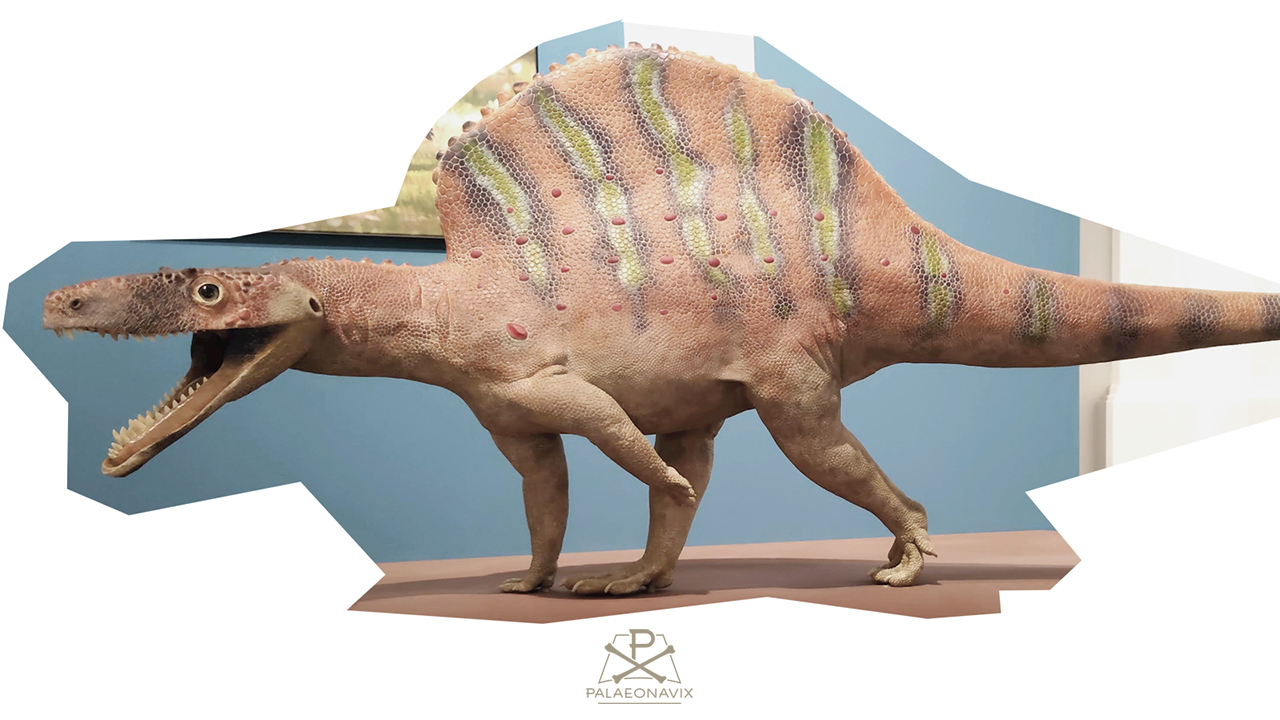A track and its producer: was Chirotherium made by Ctenosauriscus?
Chirotherium, the “hand beast”, a classic of tracefossil research. Based on the holotype, found in Thuringia in 1833, a model was to be created. The animal behind the tracks is no longer thought to be an ape, giant amphibian or marsupial, but an archosaur from the crocodilian lineage. It is plausible speculation to suggest a so-called poposaur. (Since the question is posed, particularly for German readers: The name derives from the Indian-named site where Poposaurus was found). The partial skeleton of a poposauroid archosaur was found in Lower Saxony in 1871. So why not materialize this Ctenosauriscus with its impressive back sail? The skull and legs were adapted from relatives. The result looks more like a dinosaur than a crocodile: the front legs of the chirothere trackmakers are not long enough to keep up with the stride of the hind legs. So the little hands were used to support the feet to prevent them from falling over, followed by a brief moment of bipedalism, which could not quite be achieved after all.
handmade sculpture, 2020
Museum der Natur, Gotha / Pfalzmuseum für Naturkunde, Bad Dürkheim


